Using Three
Elementary Particles to Construct the Physical World
Huawang Li
Abstract
In this paper, the existence of a new
particle, Yizi, is inferred by determining the essential concept of force in
physics. After abandoning the idealism of physics, I try to construct a
physical framework from three elementary particles: protons, electrons, and Yizis
(these elementary particles are the indivisible particles that constitute objects
in general).
The effects of Yizi on the
conversion of light, electricity, magnetism, mass, and energy as well as the strong nuclearand electromagnetic forces are
emphasized. The gravitation of electromagnetic waves is measured using a Cavendish
torsion balance. It is shown experimentally that electromagnetic waves not only
produce pressure (repulsion) but also gravitational forces upon objects. The
universe is a combination of three fundamental particles. Motion is eternal and
follows the laws of conservation of energy and momentum. There is only one force: the magnitude of change in
momentum per unit time for a group of particles travelling in one direction. Furthermore,
this corresponds to the magnitude of the force that the group of particles exerts
in that direction. From this perspective, all physical
phenomena are relatively easy to explain.
Keywords: Strong nuclear force, Electromagnetic force, Elementary particle.
Introduction
Modern physics endows matter
with too many properties; this is most apparent in the creation of the quark
model. First, the electron inelastic scattering experiment conducted [1] at the
Stanford Linear Accelerator Center has demonstrated the indented surfaces of
protons; however, this does not prove that protons are divisible, similar to
how we cannot assume a
golf ball—on account of its uneven surface—to be composed of numerous small
balls held together. To say that a proton is divisible simply because of its indented
surface is irresponsible and lacks rigor. Descriptions of
the properties of "quarks" are even more implausible.
"Quarks" not only take many forms but also exhibit fractional charges
and other characteristics. Physics has become a myth in which anything can be
changed.
In
fact, from the clouds in the sky to the interstellar clouds floating in the depths
of the universe, from
the Brownian motion of dust in air to the probability distribution of electrons
in space, and from the maglev train suspended in the air to the tightly
clustered nucleons in the nucleus, it seems plausible
to ask whether the universe is filled with a form of high-pressure gas.
Computers
can arrange all necessary information using zeros and ones. Can the universe be
arranged with the smallest number of elementary particles of any kind? In fact,
three elementary particles following the laws of conservation of energy and momentum
can be arranged and combined into all forms of matter via perpetual motion,
without the need for further properties.
1. Physical Properties
of the Unknown Particle Yizi
1.1. Average
velocityof Yizi
The entire universe is filled with Yizi gas; this gas propagates
light, just as sound is propagated
by air. The average velocity of a Yizi particle moving at random in the Yizi gas
determines the speed of light therein. Light will gradually become weaker during
propagation (similar to sound) and will finally be dissipated by the Yizi gas. In
Yizi gas, the electromagnetic waves emitted by celestial bodies of different energies
reverberate in the universe (similar to an ever-restless ocean) and form the
cosmic background temperature. Expressed otherwise, the cosmic background temperature was not generated
by the Big Bang. The perpetual motion of Yizi particles entails that the
temperature of the Yizi gas never reaches absolute zero. Yizi particles move in
all directions with an equal probability. If their movement is divided into two
orientations (i.e., front and back), then the average direction of motion in
the forward direction is at an angle of 45° from the front. This is shown in Fig.
1; here, Vy denotes the average speed of the Yizi gas, and C is the component
of Vy in the forward direction, which is also the speed at which electromagnetic
waves propagate forwards in the Yizi gas (i.e., the speed of light). The average
velocity of the Yizi gas is .
.
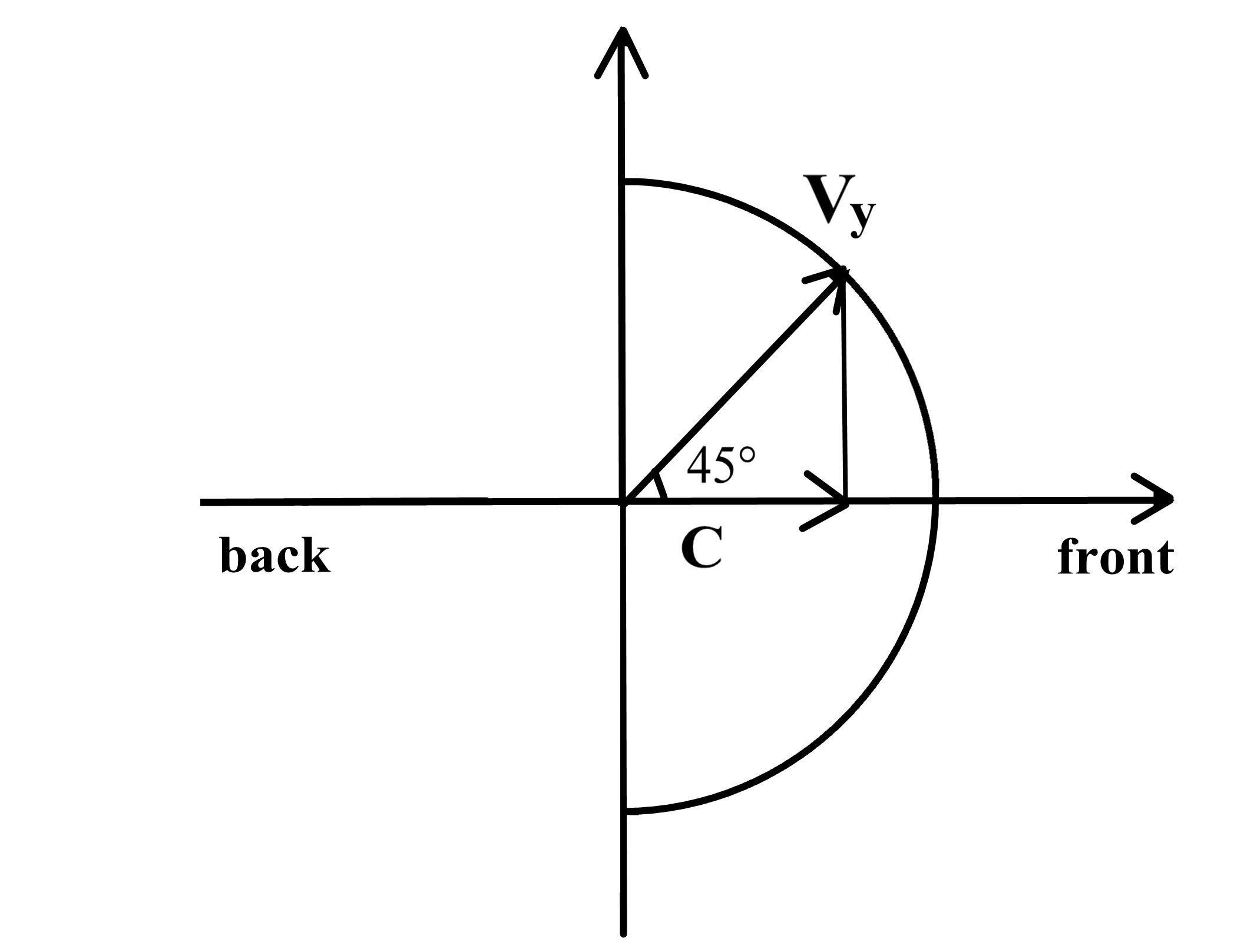
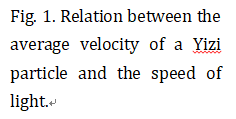
1.2. Mass of Yizi Particle
It is known that the energy carried by an electromagnetic
wave is expressed as ε = γh, where h denotes the Planck's constant and γ is the
frequency of the electromagnetic wave. In fact, h is the minimum average energy
carried by an electromagnetic wave (i.e., the average energy carried by each Yizi
particle:  ), andmy is the mass of Yizi particle, where
), andmy is the mass of Yizi particle, where
 .
.
1.3. Trajectory of Yizi Particle
Suppose that a Yizi particle is a sphere with a indented
surface, similar to a proton. Alongside translational motion,
the Yizi particle also undergoes an eccentric rotational motion about the x-,
y-, and z-axes, as shown in Fig. 2; therefore, its trajectory is an ellipse
with a waveform.
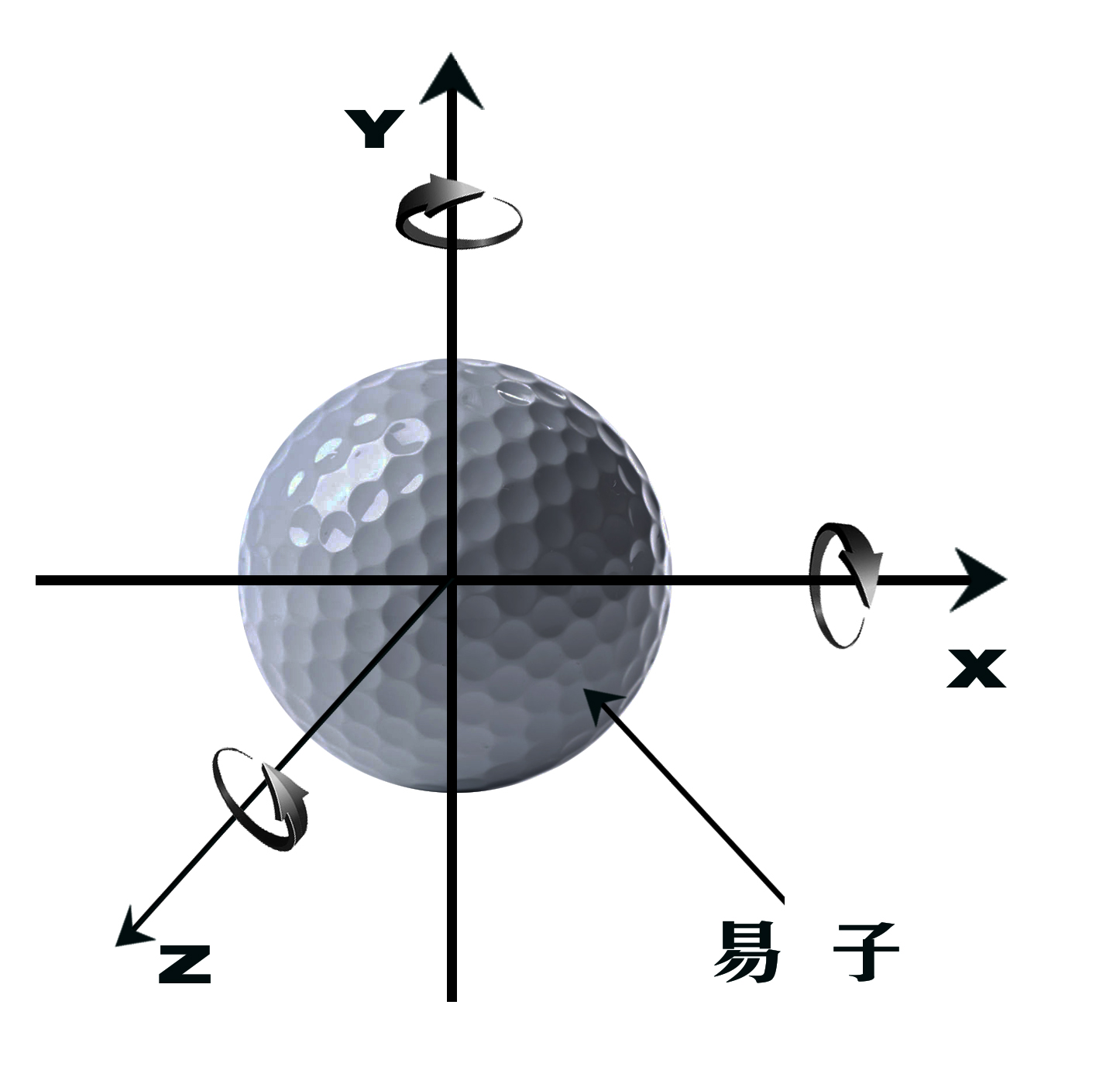
Fig. 2. Yizi model.
No linear motion occurs in the microscopic world; this
is why no elementary particles in the universe scatter.
Expressed otherwise, the
volume of the universe and the number of elementary particles within it are
both constant. When Yizi particles collides with each other, they exchange not
only translational but also angular momentum. The edge collisions of Yizi
particles induce in them a very high rotational speed. Yizi particles rotate
eccentrically around their rotational axes in different directions, and the
resultant trajectory forms a waveform ellipse, as observed for electrons and
protons. This waveform ellipse trajectory of Yizi particles determines the
polarization of the electromagnetic wave. The elliptic trajectories of
elementary particles collect all elementary particles in the universe together
and prevent them from separating.
2. Nucleus and Elementary
Particles
2.1. Because
the motions of elementary particles follow the laws of momentum and energy
conservation, the mass differences between elementary particles determine the average
velocity differences of elementary particles in space.
For example, protons and electrons collide
with each other at the same speed; their respective velocities are calculated
after the collision using the elastic collision formula, as shown in Fig. 3. Suppose
that the proton’s velocity before collision is , and electron’s velocity before
collision is
, and electron’s velocity before
collision is . We know that the mass of a proton and electron are
. We know that the mass of a proton and electron are and
and , respectively;
then, according to the elastic collision formula, we obtain the following:
, respectively;
then, according to the elastic collision formula, we obtain the following:
The
velocity of a proton after collision is .
.
|
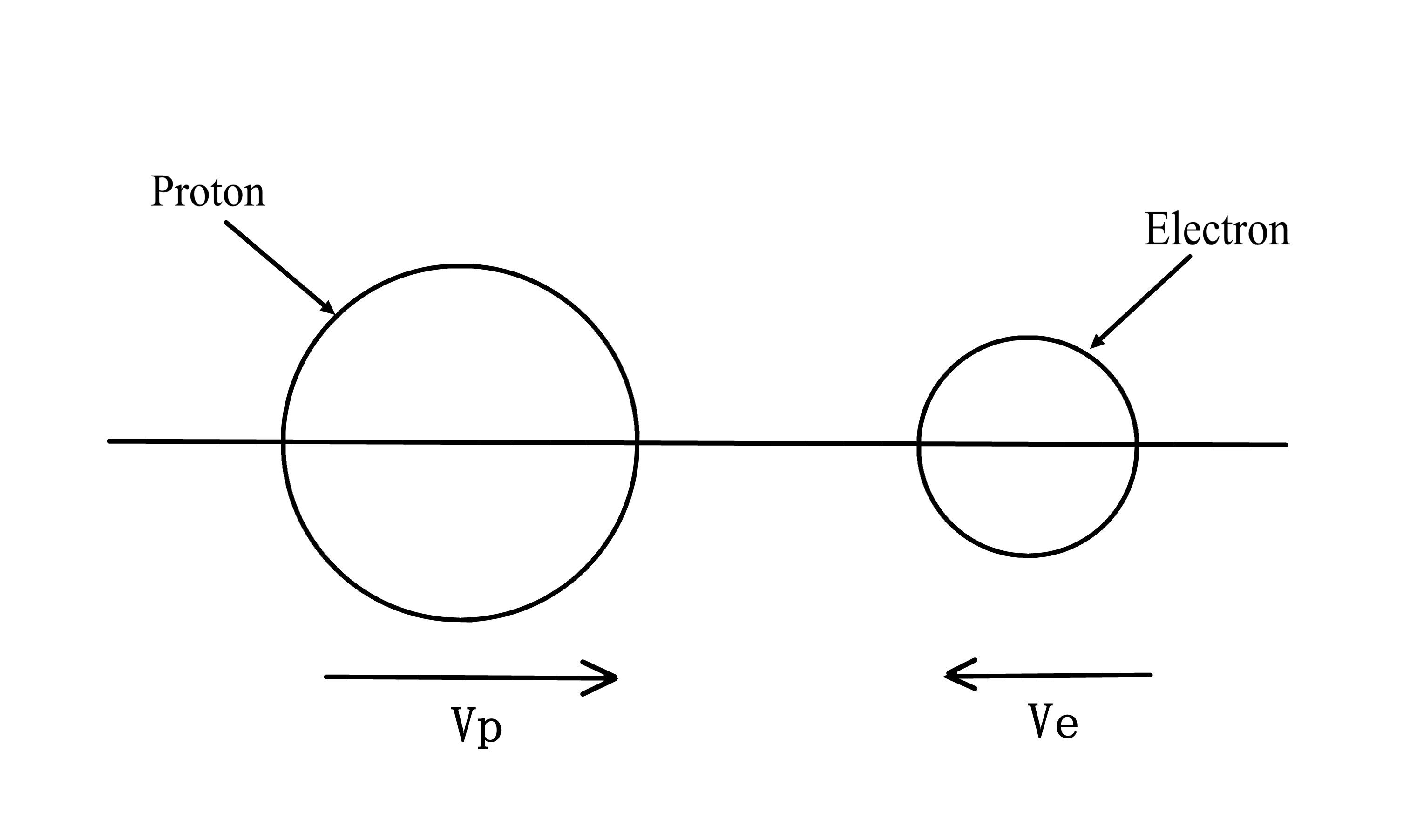
Fig. 3. Protons and electrons colliding at equal velocities.
|
The
velocity of an electron after collision is .
.
After
the collision, the proton transfers some of its kinetic energy to the electron,
which increases the electron’s velocity. Only when the momentum of a proton is equal and opposite to that of an electron (i.e., when  ) will no energy transfer occur upon
collision. Now, if the electron’s velocity is
) will no energy transfer occur upon
collision. Now, if the electron’s velocity is , then proton’s velocity will be only
, then proton’s velocity will be only . When combined,
the larger the mass of the particle, the smaller its average velocity; this is
why the average velocity of a Yizi particle can reach
. When combined,
the larger the mass of the particle, the smaller its average velocity; this is
why the average velocity of a Yizi particle can reach .
.
2.2. Two elementary particles of different mass have
different average velocities when combined and separated
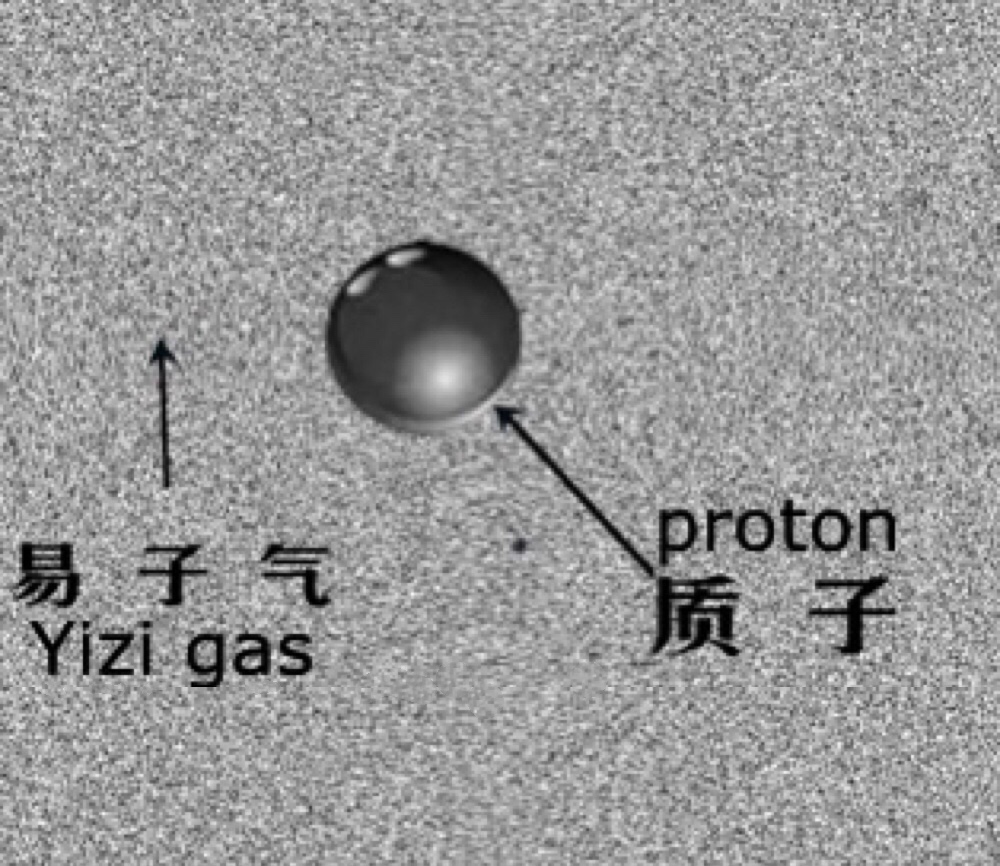
Fig.
4. Proton suspended in Yizi gas.
|
(1) When a single proton is present
in the Yizi gas (as shown in Fig. 4), the momentum of the proton and Yizi gas tend
to be equal; this is expressed as , where
, where  denotes the mass of the nucleus,
denotes the mass of the nucleus, denotes the average velocity of the proton,
denotes the average velocity of the proton,  denotes the mass of the Yizi particle, and
denotes the mass of the Yizi particle, and  denotes the Yizi particle’s average velocity,
with
denotes the Yizi particle’s average velocity,
with  /s.
/s.
The above result shows that the temperature of an
object can never reach absolute zero, owing to the presence of Yizi gas.
|
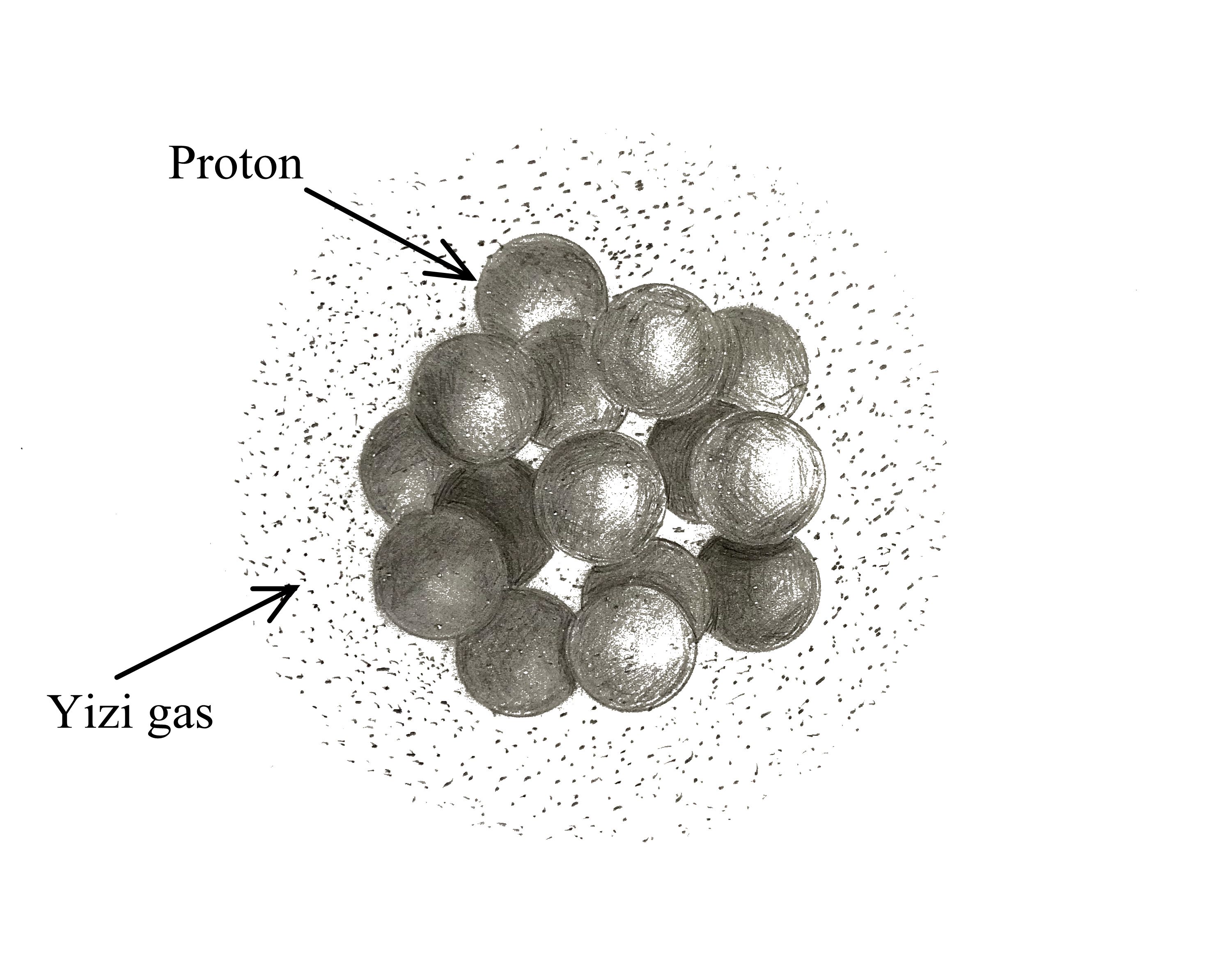
Fig. 5. Yizi
gas binding protons together.
|
(2) When a large number of
protons are separated from the Yizi gas (as shown in Fig. 5), their kinetic energy
tends to equal that of n Yizi particles in the Yizi gas. For example, when protons in the nucleus collide with each other to
produce γ-rays, one proton collides with n Yizis per second, and n equals the
frequency of the γ-rays ( ). The kinetic energy of a
proton tends to be equal to that of n Yizi particles; this is expressed as
). The kinetic energy of a
proton tends to be equal to that of n Yizi particles; this is expressed as , where h is the Planck
constant andvpis the average rate of protons
, where h is the Planck
constant andvpis the average rate of protons . This result shows that when multiple
protons are clustered together, they absorb energy from the Yizi gas and achieve
a high average velocity; this corresponds to an equivalent temperature of
. This result shows that when multiple
protons are clustered together, they absorb energy from the Yizi gas and achieve
a high average velocity; this corresponds to an equivalent temperature of , where the right-hand figure is the absolute temperature. This is why
all stars have very high internal temperatures and why nuclei contain large
quantities of internal energy.
, where the right-hand figure is the absolute temperature. This is why
all stars have very high internal temperatures and why nuclei contain large
quantities of internal energy.
2.3. Protons have no positive charge and electrons have
no negative charge
Because of its high density and pressure, Yizi gas not
only forces multiple nucleons together to form nuclei but also constrains electrons
around the nucleus. This ability of Yizi gas relates to four factors: (1) It is
primarily related to the surface area of the nucleus: the greater the surface
area, the greater the number of bounded electrons. (2) It relates to the
kinetic energy of the nucleons inside the nucleus: when the kinetic energy of
these nucleons increases, the kinetic energy of the electrons outside the
nucleus also increases, and the number of electrons that can be bound decreases.
(3) It relates to the curvature of the spherical nucleus: as the curvature increases,
the number of electrons decreases. (4) It relates to the temperature: the
higher the temperature, the fewer the electrons that can be bound.
Increasing the number of nucleons increases the time
required for the kinetic energy to be transferred from the nucleus to the Yizi
gas upon collision therebetween. In this way, the kinetic energy of the nucleons
increases, which in turn increases the size of the nucleus and eventually converts
it into an unstable radioactive element.
2.4. The spatial energy
density, quantity density, and pressure of Yizi gas
Neglecting the influence of the kinetic energy, spherical curvature,
and temperature of the nucleus upon the number of electrons outside it, we find
that the number of electrons outside the nucleus is proportional to the nucleus’
surface area. (1) Given the radius of the proton ( [2]) and the number of electrons orbiting
the nucleus of each element, we can calculate the actual radius R of each
element's nucleus. If the nucleon number is A and the atomic number is Z, then
[2]) and the number of electrons orbiting
the nucleus of each element, we can calculate the actual radius R of each
element's nucleus. If the nucleon number is A and the atomic number is Z, then . (2) It is known that the specific binding energy of an iron nucleus
is , and that of the antimony nucleus is . The differences between
these two ratios . Its energy is
. (2) It is known that the specific binding energy of an iron nucleus
is , and that of the antimony nucleus is . The differences between
these two ratios . Its energy is  , which is
the difference between the volume occupied by each nucleon in an antimony
nucleus and that occupied by each nucleon in an iron one. The energy per unit
volume of Yizi gas is
, which is
the difference between the volume occupied by each nucleon in an antimony
nucleus and that occupied by each nucleon in an iron one. The energy per unit
volume of Yizi gas is  . Given that the actual radius of an
. Given that the actual radius of an  nucleus is
nucleus is  , then the actual volume of the iron
nucleus is
, then the actual volume of the iron
nucleus is  , and the actual volume of space
occupied by each nucleon in the iron nucleus is
, and the actual volume of space
occupied by each nucleon in the iron nucleus is  .
.
The actual radius of the antimony nucleus is  ; hence, the actual volume of the
antimony nucleus is
; hence, the actual volume of the
antimony nucleus is  , and that of the antimony nucleons
is
, and that of the antimony nucleons
is  ; thus,
; thus,  .
.
The energy per unit volume of Yizi gas is expressed
as follows:
 .
.
The number of Yizi particles in
the unit space volume is  , where h is the Planck’s
constant; then,
, where h is the Planck’s
constant; then,
 .
.
The mass of a cubic meter of
Yizi gas is
 .
.
In other words, there are of Yizi per cubic meter of our environment, which is difficult to imagine. It
is even more incredible that we can live in such a large mass of material and
still move freely. In fact, the space we occupy is very small. For example, if we
know that the volume of a proton is
of Yizi per cubic meter of our environment, which is difficult to imagine. It
is even more incredible that we can live in such a large mass of material and
still move freely. In fact, the space we occupy is very small. For example, if we
know that the volume of a proton is and its
mass is
and its
mass is ,
then the mass density of the proton is
,
then the mass density of the proton is .
.
A person weighing 60 kg actually occupies a spatial volume
of Yizi gas of , and the weight of the Yizi
gas they displace is
, and the weight of the Yizi
gas they displace is .
.
In addition, the resistance of an object moving in Yizi
gas depends on the average velocity of the Yizi particles. Yizi particles move
at very high velocities; hence, they offer very little resistance to objects
moving at low speeds. Low-velocity objects generate matter waves in Yizi gas. The
difference between the number of times Yizi particles hit an object from the
front (in the direction of motion) and back per unit time corresponds to the
matter wave’s frequency n. The kinetic energy of the object is , where h is Planck's constant. Because all objects exist in the Yizi
gas, their motion causes the Yizi gas to generate electromagnetic waves. In terms
of the density change of Yizi gas, when the dense portion of the electromagnetic
wave is in front of the object and thin part is behind, the electromagnetic
wave exerts a backward force upon the object. When an electromagnetic wave propagates
forward, the front of the object becomes thin, and the back becomes dense;
hence, the electromagnetic wave exerts a forward force on the object. In low-speed
objects, only a very small amount of kinetic energy is lost to the Yizi gas, in
the form of electromagnetic waves. A high-speed object (close to or above the
speed of light) creates a vortex of Yizi gas behind it and a shock wave in
front of it; this generates an extremely large resistance on the object.
, where h is Planck's constant. Because all objects exist in the Yizi
gas, their motion causes the Yizi gas to generate electromagnetic waves. In terms
of the density change of Yizi gas, when the dense portion of the electromagnetic
wave is in front of the object and thin part is behind, the electromagnetic
wave exerts a backward force upon the object. When an electromagnetic wave propagates
forward, the front of the object becomes thin, and the back becomes dense;
hence, the electromagnetic wave exerts a forward force on the object. In low-speed
objects, only a very small amount of kinetic energy is lost to the Yizi gas, in
the form of electromagnetic waves. A high-speed object (close to or above the
speed of light) creates a vortex of Yizi gas behind it and a shock wave in
front of it; this generates an extremely large resistance on the object.
The mass density of the human body is ~700 times that
of air, and people walking indoors do not feel air resistance. Similarly, the
mass densities of protons and electrons are 1900 times that of Yizi gas. Therefore,
low-speed objects in the Yizi gas do not experience resistance. When a particle
moves close to the speed of light, the resistance exerted upon it by the Yizi
gas becomes very large, rather than the mass of the particle increasing.
The pressure of Yizi gas in space is , which is equivalent to
, which is equivalent to atmospheric pressures. The large pressure of
the Yizi gas causes protons and electrons to be arranged and combined to form
the visible universe.
atmospheric pressures. The large pressure of
the Yizi gas causes protons and electrons to be arranged and combined to form
the visible universe.
2.5. How is the nuclear force generated?
If analyze the cause of the nuclear force,
deriving it from the nature of force without imposing additional properties on
the nucleus, we obtain the correct conclusion. The magnitude of the change in momentum
per unit time for a group ofparticles travelling in a
certain direction corresponds to the magnitude of the force produced by the
group of particles in that direction. Consider the following experiment: Use
small balls as the particle model, hold a cup containing balls 5 cm
above a scale, and pour oneball
onto the scale;

Fig. 6. Small balls falling onto scale.
|
the pointer of the scale
will move a little. Then, pour 100 or more balls
onto the scale continuously and quickly from the same height, as shown in Fig. 6;
the pointer of the scale rotates. This indicates that when a large number of
balls hit the scale, a constant and uniform pressure is generated. The greater
the number of ball collisions, the greater the pressure on the scale. If these
balls are dropped from a higher position, a greater pressure is observed. This observation
shows that the greater the momenta of the balls, the larger the pressure registered
by the scale. This is how the concept of force is described in junior high-school
physics textbooks and is in fact the nature of force. However, when physicists consider
gravity, the electromagnetic force, and the strong nuclear force, they forget
the essence of force. Gravitation, electromagnetism, and strong nuclear interactions
are all produced by particle collisions.
|
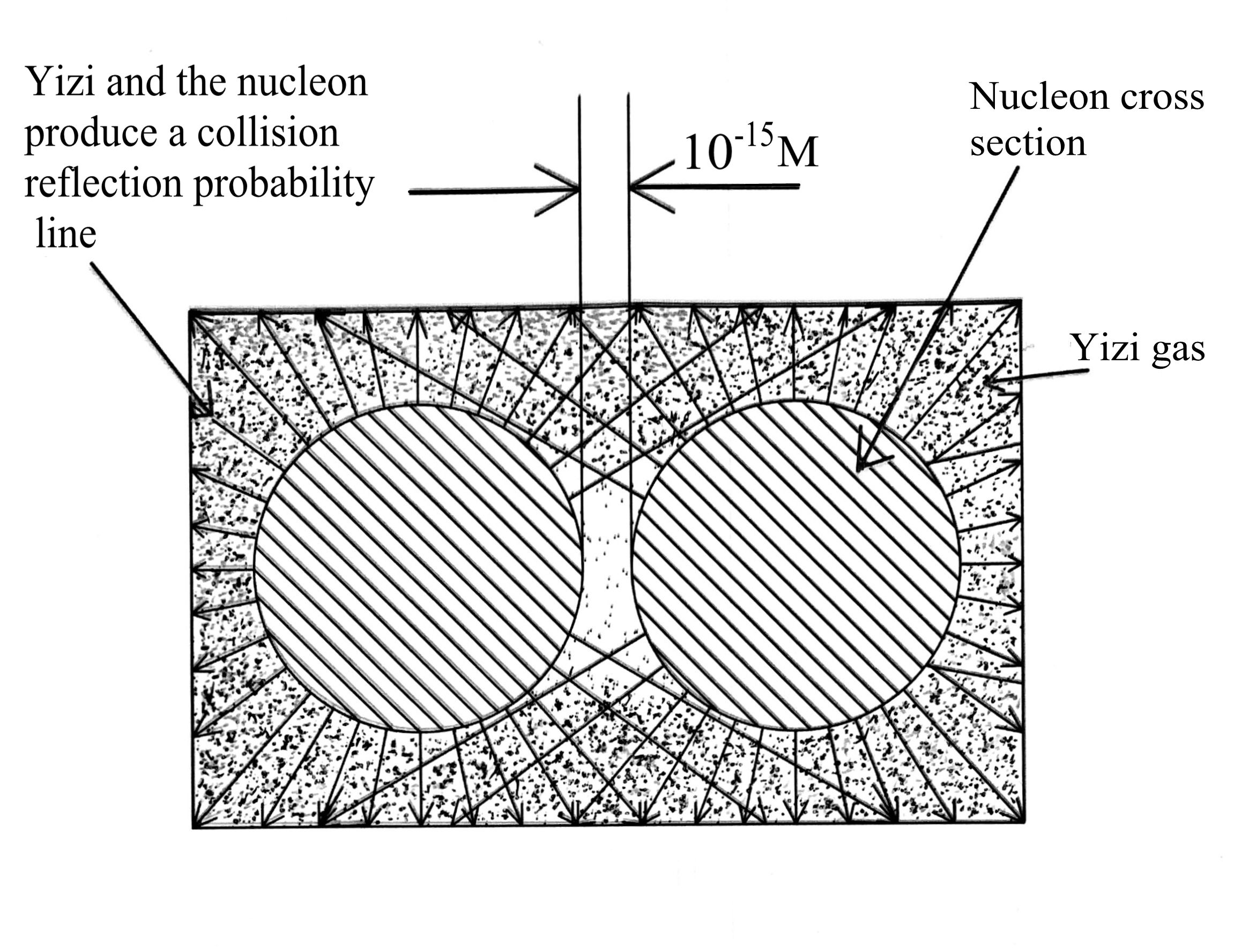
Fig. 7. Scattergram of Yizi gas for two nucleons 10-15 m apart.
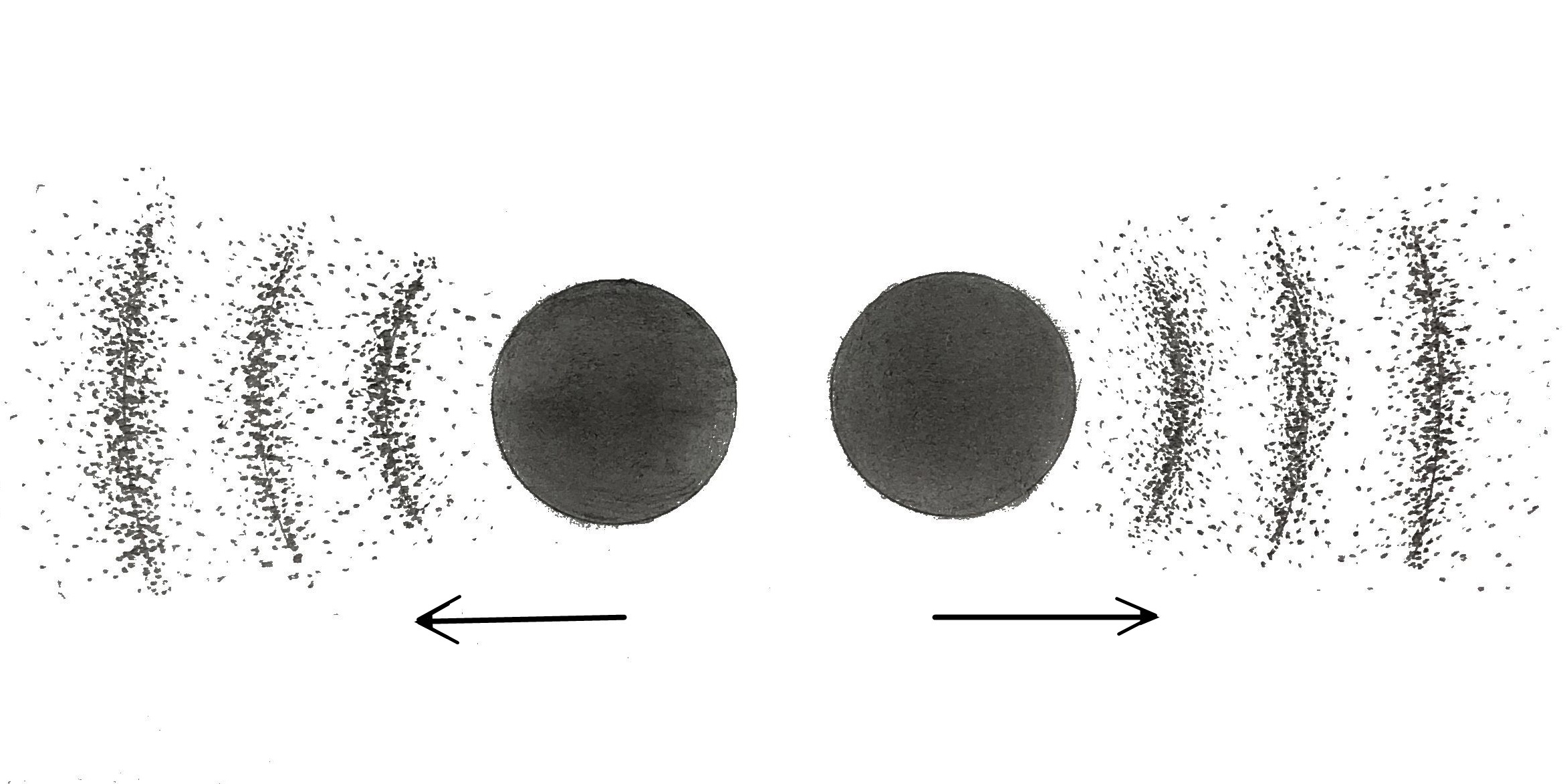
Fig. 8. Two nuclei colliding and oscillate to produce electromagnetic waves.
|
The universe is filled with Yizi
gas. Although the quality of the Yizi gas is very small,
its density and average velocity are very high. This allows the Yizi gas to generate
extremely high pressures, such that multiple nuclei are tightly forced together
to form nuclei that are difficult to separate. The nuclear force is a short-distance
force, operating on length scales of  . When the distance exceeds
this order of magnitude, the nuclear force decreases rapidly and approaches
zero [3]. As shown in Fig. 7, when two nucleons enter the nuclear interaction range
(
. When the distance exceeds
this order of magnitude, the nuclear force decreases rapidly and approaches
zero [3]. As shown in Fig. 7, when two nucleons enter the nuclear interaction range
( ), the number of collisions between the two
nucleons inside is reduced, whilst that outside is increased. Owing to the
effects of Yizi gas pressure, the two nucleons rapidly approach each other. At the
moment of collision, and according to the specific binding energy of the mediating
nucleus, we know that the nucleons can be accelerated by the Yizi gas pressure (within
an ultra-short distance of
), the number of collisions between the two
nucleons inside is reduced, whilst that outside is increased. Owing to the
effects of Yizi gas pressure, the two nucleons rapidly approach each other. At the
moment of collision, and according to the specific binding energy of the mediating
nucleus, we know that the nucleons can be accelerated by the Yizi gas pressure (within
an ultra-short distance of m) to a velocity of more than
m) to a velocity of more than m/s. After collision, the
vibration produces a density change in the Yizi gas and generates a shock wave
in the form of an electromagnetic wave (as shown in Fig. 8).
m/s. After collision, the
vibration produces a density change in the Yizi gas and generates a shock wave
in the form of an electromagnetic wave (as shown in Fig. 8).
2.6. Mass-energy equation
The
energy per unit volume of Yizi gas is  , and the number of Yizi particles per unit volume is
, and the number of Yizi particles per unit volume is  . Under this energy, the number of Yizi particles displaced
by particles with energyε is
. Under this energy, the number of Yizi particles displaced
by particles with energyε is  .
.
The mass of N Yizi particles is , where
, where
 .
.
Here,my is the mass of a Yizi particles and is
equivalent to the Planck's constant. That is,∆m denotes the mass
increase of a particle with kinetic energyε, and it is equal to the mass of the Yizi gas displaced
by this particle.
Energy
is always inseparable from physical particles, and particle energies can only
be expressed as . No energy exists without mass, and mass and energy
cannot be converted to each other.
. No energy exists without mass, and mass and energy
cannot be converted to each other.
3. Gravitational Effects of Electromagnetic Waves
Electromagnetic waves correspond
to the density changes of Yizi gas, which are produced by proton–proton, proton–electron,
or electron–electron collisions. The density change causes the Yizi gas to oscillate around the equilibrium point. Electromagnetic waves passing
through and reflecting off of objects exert a gravitational effect upon those
objects. Some
of the electromagnetic wave is absorbed by the object and becomes its overall
kinetic energy, producing a repulsive force; the rest is converted to the
kinetic energy of the particles inside the object (internal energy).
When an electromagnetic
wave is irradiated upon an object, these two effects occur simultaneously. When
the gravitational force exceeds the repulsive force, the electromagnetic wave
source is attracted to the object; when the repulsive force exceeds the
gravitational one, a repulsion occurs. Why are electromagnetic waves
attractive? The electromagnetic waves generated by the wave source increase the
non-uniformityof the Yizi particles’
velocities in the Yizi gas. When Yizi
particles cross a unit area between the light source and object (within a unit
time),the number diffused
from the inside to the outside is equal to the number diffusing from the outside
to the inside; both are equal to n.
Assuming that the velocities
of Yizi particles diffusing from the outside to inside are V1‘,V2’,V3‘,……Vn’, and
the velocity of those diffusing from the inside to outside are V1’,V2’,V3’,……Vn’,
then the average velocities of Yizi particles spreading from the outside in and
the inside out areand. Then, we obtain

Let VV denote the non-uniformity of the velocities at which Yizi
particles diffuse from the outside in; further, letV' denote the non-uniformity of the velocities of those
diffusing from the inside out; then,

The electromagnetic
wave generated by the light source increases the non-uniformity of the Yizi
particles’ velocities in the direction of the Yizi gas trajectory; this
non-uniformity increases closer to the light source. Therefore, the non-uniformity
of the velocities of the Yizi particles diffusing from the inside out exceeds those
diffusing from the outside in; that is,

Using an expansion, we obtain

By substituting ①
and ② into ⑥ and ⑦ respectively, we obtain

Substituting ⑧ and ⑨
into ⑤
yields

Because the energy per unit
volume is equal, we can use the law of energy conservation to obtain the following:

Then,
we substitute ⑪ into ⑩ to obtain ;
that is,
;
that is,

Multiplying ⑫ by  on both sides, we obtain
on both sides, we obtain

Force is the change in
momentum per unit time; thus, we can conclude from ⑬ that the force F created
by the outside-in spread exceeds that from the outside-in spread and the
gravitational force of the light source, F – F'[4].
Molecules, atoms,
protons, and electrons make up objects which exhibit different
absorption and emission spectra under the same environmental conditions. Each type of particle can
transfer its kinetic energy to the Yizi gas (under certain conditions) and emit
light waves with a frequency equal to its energy. The
emitted light waves become wider and weaker under an increase in the
propagation distance.
Similarly, a large
number of light waves of the same frequency as this emitted light wave act continuously
on particles that have lost their kinetic energy; after many repetitions, these
particles continue to absorb the electromagnetic energy of the Yizi gas until
they regain their original kinetic energy. This explains the relaxation time of
absorbed light waves in photoelectric effect experiments. There are no photons
in the universe, and the light pressure formula is incorrect. This is proven
experimentally in the next section.
4. Experiment: Use of Cavendish Scale to Measure the Gravitational
Effects of Electromagnetic Waves on Objects.
4.1. Equipment: vacuum tank, vacuum pump, Cavendish
torsion scale, laser torch, transformer, voltmeter, ammeter, whiteboard, and laser
rangefinder. Fig. 9 shows the experimental environment.
4.2. Experimental
principle
|

Fig. 9. Experimental set-up.
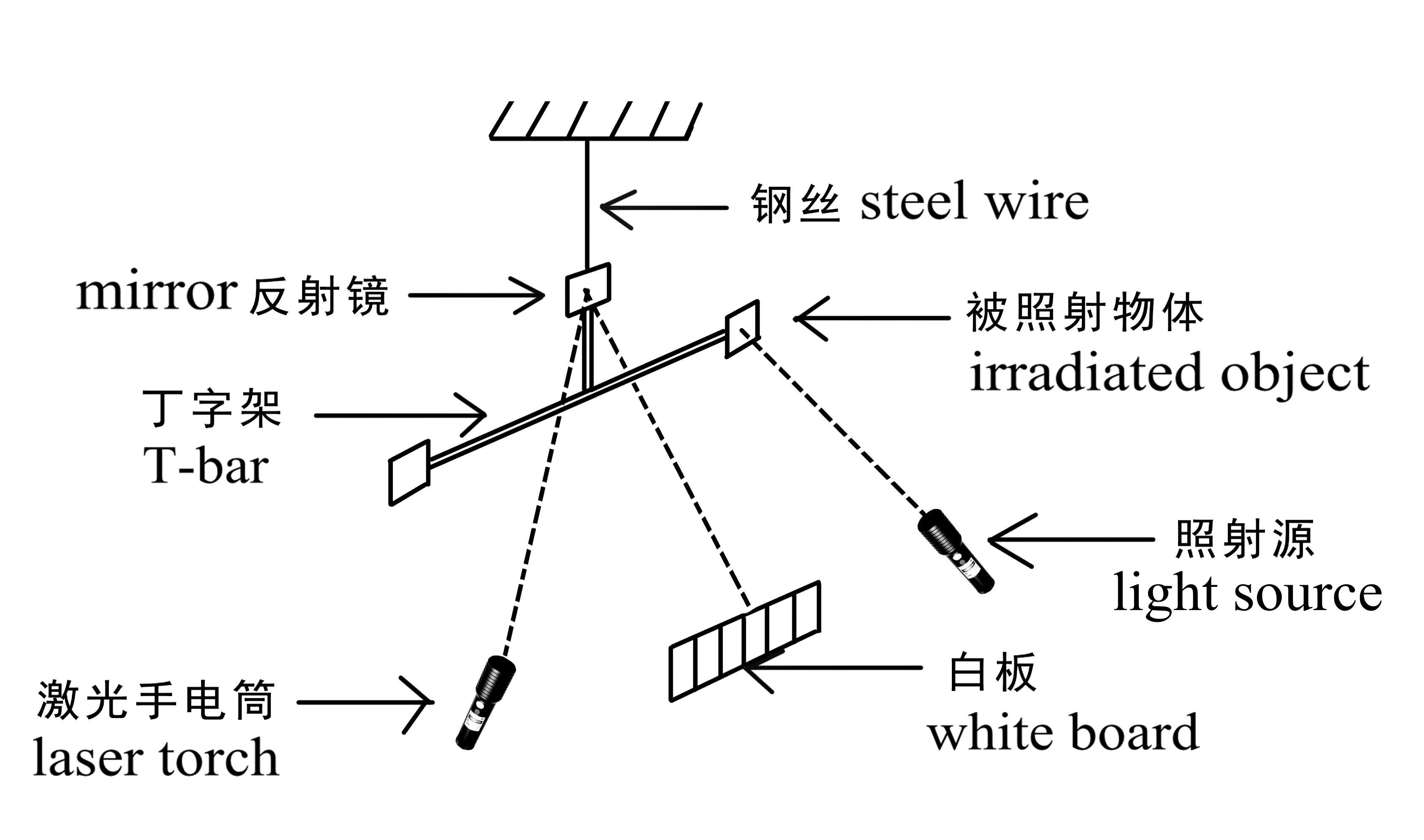
|
Fig. 10. Working principle for measuring the force of an electromagnetic wave using a Cavendish scale.
|
|
As
shown in Fig. 10, a steel wire was suspended at the top of the vacuum tank, and
a T-bar was fixed on its lower end. Two objects to be irradiated were installed
on the ends of the T-bar. A blue laser was
used as the light source (wavelength:
460 nm) and light was shone upon one of the irradiated objects. A small mirror was
installed on the vertical section of the T-bar, and another green laser was
used as a light source. The light beam was projected onto a small mirror on
the vertical component of the T-bar; then, it was reflected onto a whiteboard some
distance away. Using the trajectory of the light spot, I determined whether the
force exerted on the illuminated object was attractive or repulsive; then, I estimated
the magnitude of the force with respect to the distance travelled by the cursor.
The experiment proves that the torsion constant K of the suspension
wire increases slowly under a decrease in the mass of the objects installed at the
ends of the T-bar. Here, k was considered to be approximately constant. Two
small shot balls ( ) were installed at either end of the T-bar; the torsion balance arm
length was , swing period of the torsion balance was
) were installed at either end of the T-bar; the torsion balance arm
length was , swing period of the torsion balance was , the torsion constant of the suspension wire was
, the torsion constant of the suspension wire was , and the force acting on the
irradiated object was
, and the force acting on the
irradiated object was  , where S denotes the light point’s
moved distance, and L is the distance from the small mirror (on the vertical portion
of the T-bar) to the whiteboard.
, where S denotes the light point’s
moved distance, and L is the distance from the small mirror (on the vertical portion
of the T-bar) to the whiteboard.
4.3. Attention:
4.3.1.
The high sensitivity of the torsion scale was ensured. The steel wire used in
this experiment was 0.1 mm in diameter and 72 cm long.
4.3.2. The torsion scale was placed in a
vacuum tank (with a vacuum of up to ), to prevent
air disturbances caused by temperature changes in the irradiated object, which might
influence the torsion balance; when the residual gas pressure exceeds 103 Pa, this
influence is very large, and different experimental results will be obtained.
When the residual gas pressure is below 1 Pa, no obvious influence occurs.
), to prevent
air disturbances caused by temperature changes in the irradiated object, which might
influence the torsion balance; when the residual gas pressure exceeds 103 Pa, this
influence is very large, and different experimental results will be obtained.
When the residual gas pressure is below 1 Pa, no obvious influence occurs.
4.3.3. The irradiation source was placed
outside the vacuum tube, to prevent the influence of circuit equipment on the
torsion balance.
4.3.4. I used the position of the light
point on the whiteboard (when the torsion balance stopped swinging) as the
center point; however, this center changes constantly (like the ebb and flow of
the sea). Therefore, when force was applied to the torsion balance, the
force can only be analyzed using the distance between the center point at a
certain moment and the equilibrium point of the light as it oscillates back and
forth on the whiteboard.
4.3.5. The torsion balance was very
sensitive to light and temperature; thus, the experimental site was chosen as an
environment featuring minimal change of backlight and temperature.
4.4. Experimental process
4.4.1.
The irradiated object was a copper block, as shown in Fig.
11. The blue laser source (wavelength: 460 nm) was projected onto the object (light-source
voltage = 4.738 V; electric current = 0.376 A, ,,
and ) and the
distance that the light point moved in the direction of repulsion was
) and the
distance that the light point moved in the direction of repulsion was (as shown in Fig. 12); the repulsive force was
(as shown in Fig. 12); the repulsive force was

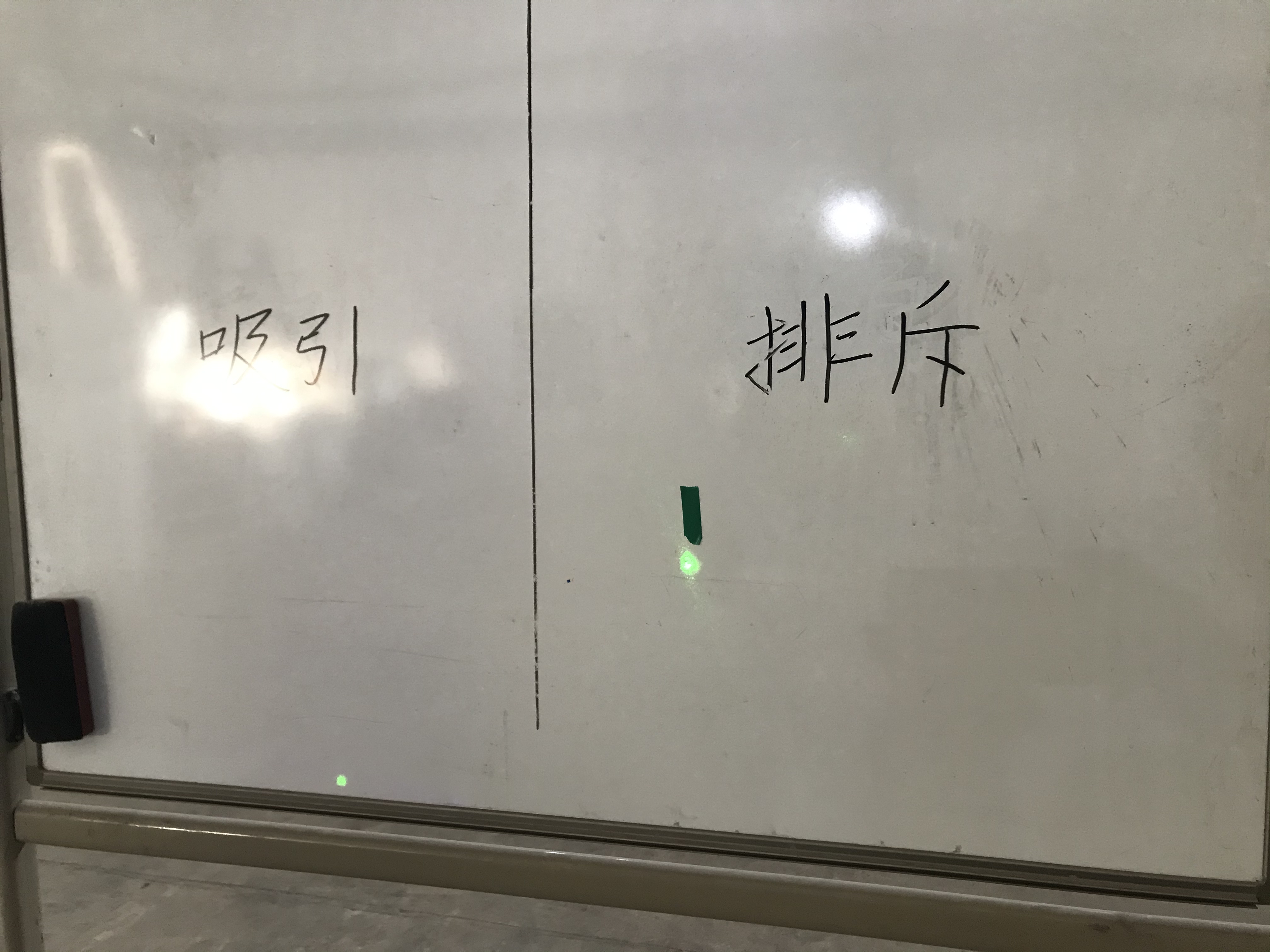
Fig. 11. Copper block as the irradiated object. Fig. 12. Spot displaced by 14 cm
in direction of repulsion.
4.4.2. When a bearing
steel block was irradiated,
the blue laser (wavelength = 460 nm) was projected onto it, and the distance
between the source and object was 1.094 m. The power of the light source was
adjusted using a transformer. When the voltage of the light source was 4.718 V
and its current 0.360 A, the distance moved by the light spot in the direction
of attraction was , as shown in Fig. 13. The distance from the small mirror (on the
vertical bar of the T-frame) to the whiteboard was
, as shown in Fig. 13. The distance from the small mirror (on the
vertical bar of the T-frame) to the whiteboard was , the length of the torsion balance arm was , the torsion constant of the suspension wire was
, the length of the torsion balance arm was , the torsion constant of the suspension wire was  , and the attraction was
, and the attraction was  .
.
4.4.3. When the irradiated object was a 2-mm-thick transparent glass,
the light from the blue laser source (wavelength: 460 nm) was projected onto
the irradiated object. The voltage of the light source was
4.716 V and the current was 0.368 A. The distance the light traveled in the
direction of attraction was S≈1cm,,, and the attractive force
and the attractive force .
.
4.4.4. When the irradiated object was a small 4-mm-thick glass
mirror, the blue laser source (wavelength: 460 nm) was projected onto it with a voltage
of 4.737 V and current of 0.354 A. The distance moved by the point of light in
the direction of repulsion was ,,, , and the repulsive force was
, and the repulsive force was  .
.
4.5. Experiment summary
The four experiments given above prove that the light pressure experiments
conducted by the Russian physicist Lebedev were incomplete. He saw only that
light repelled the object, and not that light attracted it. The light pressure formula ρ=S/c [5] holds that the light pressure on the
surface of a fully absorbed object is equal to ρ, and when light vertically strikes a completely
reflecting surface, it is equal to 2ρ. The theoretical basis of the light pressure formula is Maxwell's
classical theory of electromagnetism and the particle properties of photons. The
second and third experiments above prove that the blue laser exerts
a gravitational force upon the stainless steel objects and transparent glass; the
first and fourth experiments show that the pressure produced by light vertically
striking a highly absorbent object exceeded that caused by light vertically hitting
a highly reflective object (the small mirror). The light source power and distance
from the illuminated object were both constant; however, according to the light
pressure formula and the theory that photons have momentum, when a light source
shines vertically on the mirror, the mirror should receive twice the light
pressure. However, the experimental results do not show this. These experiments
show that the light pressure formula is only derived from theory, without comprehensive
experimental proof. It also proves that photons do not exist.
5. Positrons
and Mesons
5.1. Positron: First, from the perspective
that physical particles cannot disappear, there is no energy without mass. Because
positrons can release two γ photons, the energy of each photon is [6], indicating that
positrons have an energy of .
From the formula ,
we can determine the positron’s velocity as
,
we can determine the positron’s velocity as .
This is faster than the speed of light and the average velocity of the
commutator; hence, it is impossible for an electron to attain that velocity in
an electron accelerator. Only in radioactive elements—where electrons collide
with massive, high-energy protons—are the protons in the nucleus required to
travel as fast as
.
This is faster than the speed of light and the average velocity of the
commutator; hence, it is impossible for an electron to attain that velocity in
an electron accelerator. Only in radioactive elements—where electrons collide
with massive, high-energy protons—are the protons in the nucleus required to
travel as fast as to achieve an energy of .
Therefore, positrons are simply very high-energy electrons, and the Yizi gas
pressure cannot bind them to the surface of the nucleus. Only when a positron
collides with a low-energy electron and releases some of its kinetic energy
into two medium-energy electrons can the Yizi pressure bind it to the surface
of the nucleus and simultaneously release two gamma rays of
to achieve an energy of .
Therefore, positrons are simply very high-energy electrons, and the Yizi gas
pressure cannot bind them to the surface of the nucleus. Only when a positron
collides with a low-energy electron and releases some of its kinetic energy
into two medium-energy electrons can the Yizi pressure bind it to the surface
of the nucleus and simultaneously release two gamma rays of  each. The direction
of particle deflection in the magnetic field depends on the kinetic energy of
the particle. The electron has no negative charge, and the positron has no
positive charge.
each. The direction
of particle deflection in the magnetic field depends on the kinetic energy of
the particle. The electron has no negative charge, and the positron has no
positive charge.
5.2. Meson: A meson is 285 times the mass
of an electron [7] and is simply a high-energy electron. When the proton energy
reaches ,
the proton and electron collide with each other; thus, the electron obtains the
same energy. At this time, the electron velocity can reach .
The electrons occupy a large volume in the commutator gas; hence, the mass of
the commutator gas is 285 times that of the electron. Because the velocity exceeds that of light, the shock
wave causes energy to be rapidly released; as a result, the meson has a very
short life span.
.
The electrons occupy a large volume in the commutator gas; hence, the mass of
the commutator gas is 285 times that of the electron. Because the velocity exceeds that of light, the shock
wave causes energy to be rapidly released; as a result, the meson has a very
short life span.
6. The
Electrostatic Force
The force that binds electrons to the nucleus
is produced by the pressure of the Yizi
gas. The nucleus has a limited ability to bind electrons. When the
electron density is too high, the electrons repel each other and diffuse to achieve
a smaller electron density; this is manifested as a mutual repulsion between
electrons. When the electron density
is too small, the nucleus absorb electrons from the surroundings, such that the
density distribution of the surrounding electrons and nucleus reaches a balance;
this is reflected in the mutual repulsion between nuclei. When negatively or positively
charged objects are placed in contact with a neutral object, the electron
density distribution becomes non-uniform. Both neutral objects and charged objects
must bind electrons; hence, charged objects exhibit the capacity to attract small
scraps of paper.
7. Magnetism
7.1 Permanent
magnet materials: All moving objects create a magnetic field, which is a
stream of air or a cyclone created by the flow of Yizi gas.
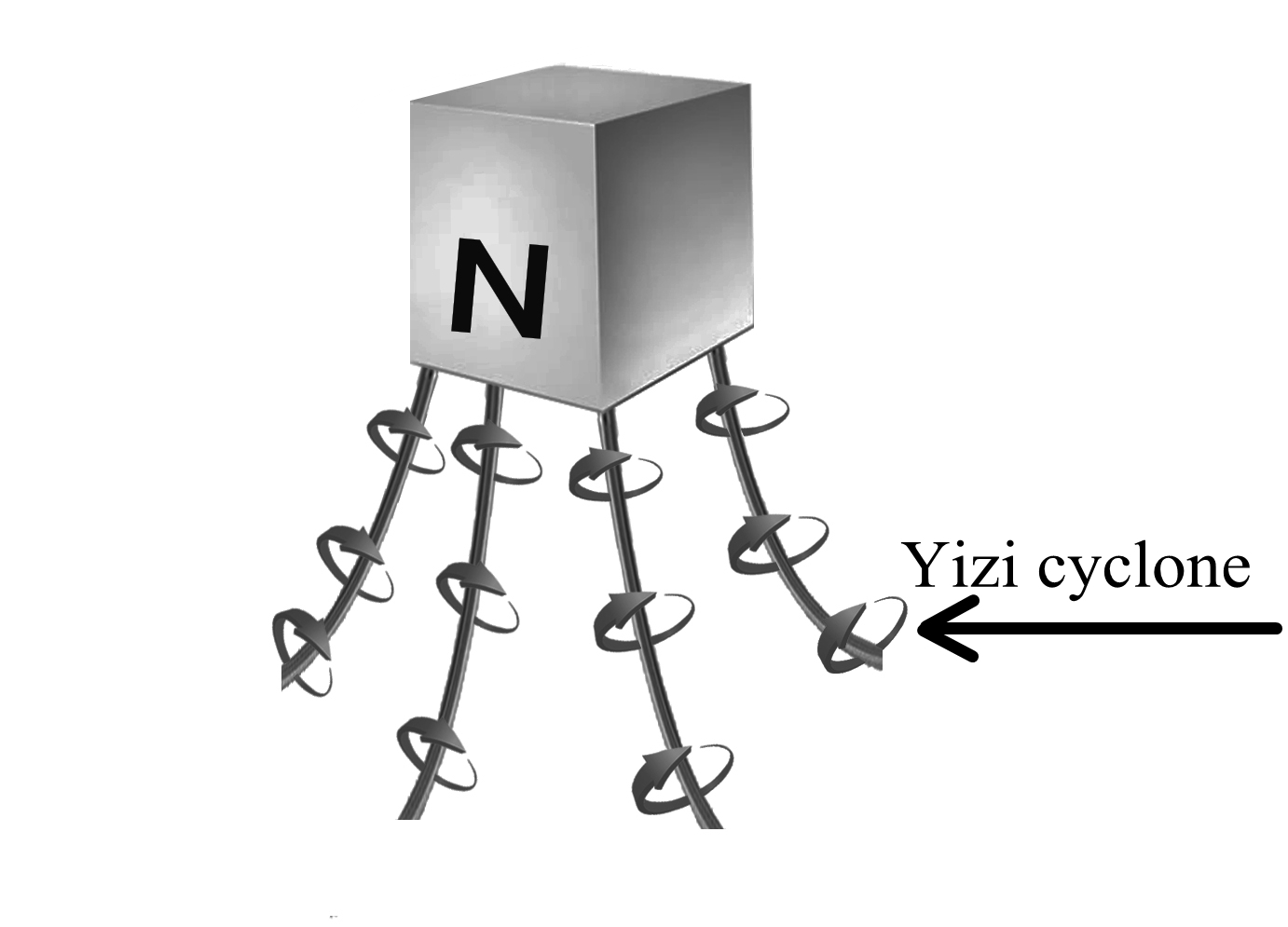
Fig.13.Permanent
magnet generating a rotating magnetic field.
|
Permanent magnetic materials feature
a unique lattice structure. The electrons in the crystal oscillate between the
nuclei under the action of the Yizi gas. Upon colliding with surrounding
particles, the electrons orbit around a group of molecules or atoms. The
electrons’ rotation in the Yizi gas creates many cyclones therein, and these form
a rotating magnetic field, as shown in Fig. 13. Cyclones rotating in the same
direction attract each other, which is why the North and South poles of a
magnet attract one another.
7.2. Magnetic field formed by energized wire: Place two
energized wires parallel and close to each other. When the currents in the wire
are aligned, the flow of electrons drives the flow of Yizi gas. The two strands
of Yizi gas flow in the same direction and attract each other. When the currents
in the wires flow in opposite directions, the two Yizi gases flow in opposite
directions and repel one other.
7.3. Lorentz force
As shown in Fig. 14, the
magnetic force of the multicyclone magnetic field points outwards from the
paper, and
the cyclone direction is defined as that in which the electrons in the magnetic
material or spiral wire move around the nucleus. Hold out the left hand and extend
the thumb in the direction of the magnetic force line; then, the direction
indicated by the other four fingers is the direction of cyclone rotation.
|
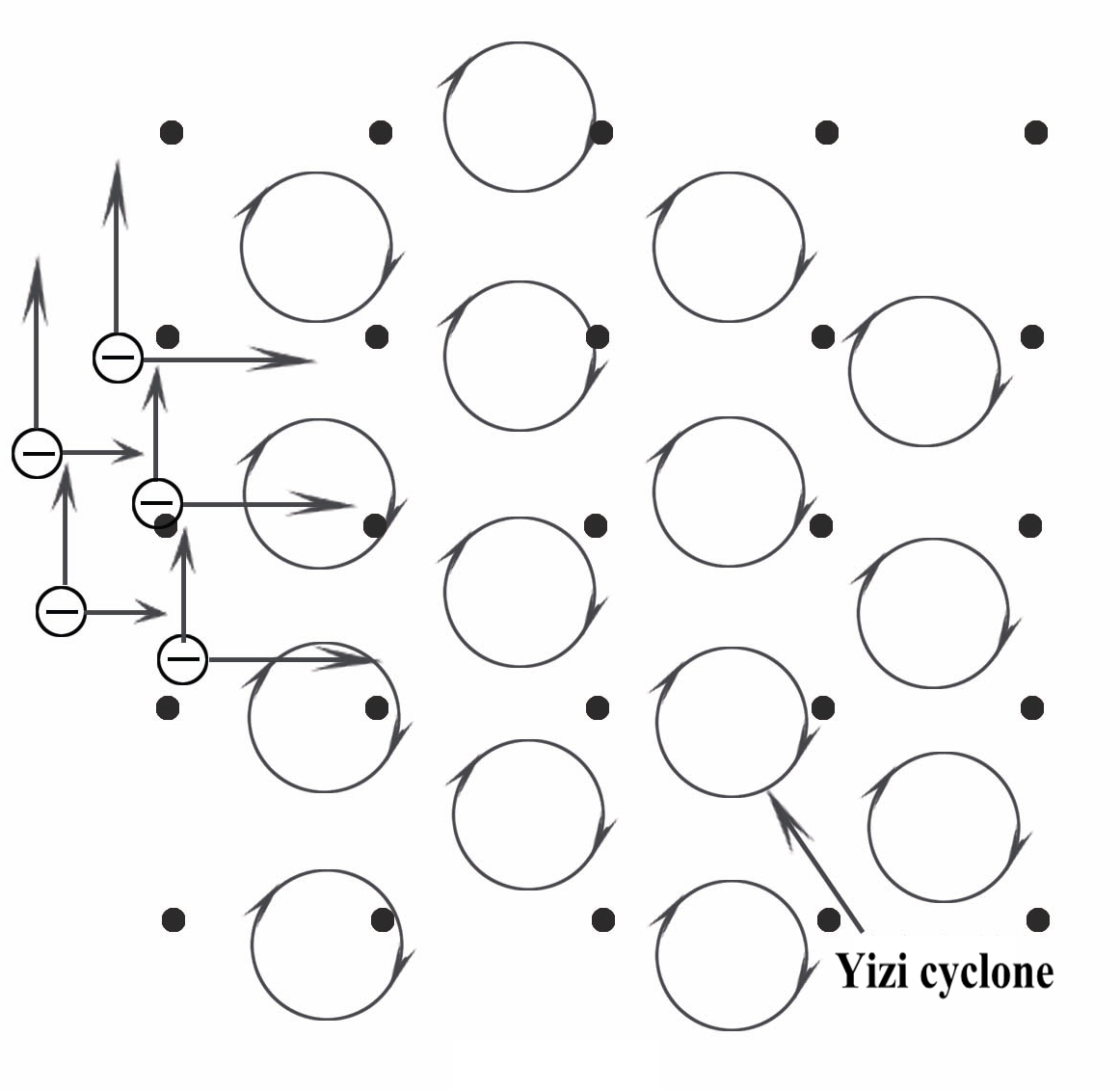
Fig.
14. Electrons entering a rotating magnetic field.
|
When a
beam of electrons enters the magnetic field vertically from left to right, it
encounters the cyclone of Yizi gas and is subjected to the upward force exerted
by the outer layers of Yizi particles. The electrons continuously collide with
several cyclones and are subjected to a force perpendicular to their own direction
of motion. This force becomes the centripetal force holding the electrons in
their orbits; it makes them deviate from their original straight-line motion
and rotate counterclockwise. When a proton enters the magnetic field, it can set
off several cyclones in series because its kinetic energy is much greater than
that of the electron. The force exerted upon the proton acts against that of
the electron. This is the Lorentz force.
7.4. Electromagnetic
induction
As shown in Fig. 15, the magnetic field line points outwards from the paper, and the
current in the conducting wire increases; thus, the electron flow direction is
downward and the Yizi gas cyclone rotates clockwise. The downward-moving
electrons in the wire encounter the cyclone and are forced to the right; as
a result, the wire moves to the right.
As shown in Fig. 16, the magnetic field lines point out of the
paper, and a portion of the closed wire passes through the magnetic field,
moving from left to right with a velocity V. The electrons in the wire are constantly
colliding with the cyclones in the magnetic field. Under the effect of these
cyclones, the free electrons in the wire move upward to form the current I, which
is directed downward.
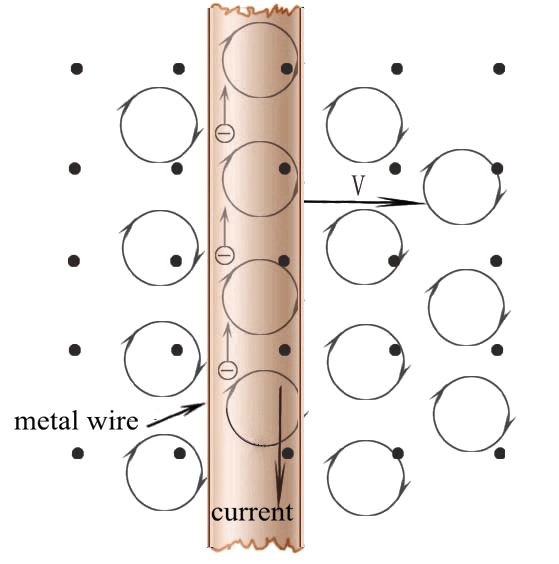
|
Fig.15.
Force of rotating magnetic field on a live wire.
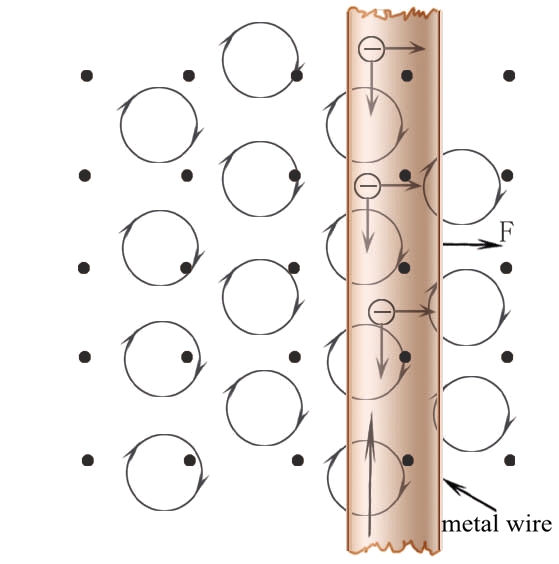
|
Fig.16. Force of a rotating magnetic field on a moving wire.
|
|
8. Summary
A dynamic theory of
gravity was proposed as early as 1690 by Nicolas Fatio de Duillier, and later
reintroduced by Georges-Louis Le Sage in 1748. The theory
offers a mechanical explanation of Newtonian gravity with the flow of tiny
invisible particles. These particles, which Le Sage calls "ultra-mundane corpuscles," smash into everything from all directions.
According
to this model, any two objects will obscure some corpuscles that hit them, so the static pressure of the corpuscles hitting the object will be unbalanced, causing the
two objects to move close to each other. This mechanical explanation of gravity
was never widely accepted [8].
In
fact, the correct understanding of "ultra-mundane
corpuscles" is the key to fully understanding physics. Because
"Le Sage’s theory of gravity" cannot correctly define the physical
properties of "ultra-mundane corpuscles,"
and a significant mistake appeared in the explanation of the cause of universal
gravitation, so physicists who believe in virtual matter have led physics down
the wrong road.
In
this paper, Yizi replaces the "ultra-mundane
corpuscles," the material composition of the three
elementary particles is the same, and the particle volume increases in direct
proportion to the increase in the mass. The mass in question is the rest mass [9].
It is inferred from the indented surfaces of protons that Yizi and electrons
may also have indented surfaces, and it is assumed that all collisions between
elementary particles are elastic collisions. From the physical particle perspective,
there is no energy without mass, so the minimum energy unit in blackbody
radiation [10] should be Yizi’s average kinetic energy , and Yizi’s rest mass is 7.37×10 -51kg.
Protons and electrons
move in Yizi gas, and the greater the movement speed, the larger the volume of
Yizi gas displaced. The motion mass of protons and electrons is greater than
their rest mass, the added mass is equal to the rest mass of Yizi gas they
displace, and the Yizi motion has no such resistance, so Yizi’s motion mass is
the same as its rest mass.
Since
they are physical particles, the number of the three elementary particles that comprise
the universe is fixed. The mass of the three elementary particles determines
their average velocity in the universe. Particles with a lower mass have a
higher average velocity, so electromagnetic waves can only travel through Yizi
gas.
The indented surface
elementary particles determines that they are moving linearly as well as in
eccentric rotation, and their movement trajectory is an ellipse with sine
waves. Because π is an infinite non-repeating decimal starting at any point in
time, the starting point of the particle's eccentric motion will not coincide
with the end point after one revolution. Because the
trajectory of elementary particles is an ellipse with a sine wave, elementary
particles in the universe will never fly out of the universe, demonstrating
that electromagnetic waves have the properties of transverse waves.
When a single proton
without electromagnetic radiation is in Yizi gas, the proton’s momentum tends
to be equal to that of Yizi in Yizi gas, and the proton’s temperature tends to
be absolute zero. When many protons congregate, their kinetic energy tends to
be equal to that of Yizi in Yizi gas (considering that the protons’ volume is
much larger than Yizi, so the protons should act on a group of Yizi at the same
time rather than on one), and the protons have a very high temperature. Examples include the Sun’s central temperature, the Earth’s central
temperature, and the inner temperature of a nucleus.
As
Peter Guthrie Tait said of Le Sage’s theory of gravity, "The strangest
thing about this theory is that, if it were true, it would be possible to
deduce that all kinds of energy are ultimately kinetic" [11].
Experiments proved
that thermal radiation is the root cause of gravitation [12]
and contains electromagnetic waves with various frequencies. Specific objects
can only absorb electromagnetic waves with certain frequencies. Some of the
absorbed energy is converted into the object’s internal kinetic energy (internal
energy), the other part into the object’s kinetic energy (repulsive force to do
work), and unabsorbed electromagnetic waves produce gravitational effects on
the object.
When a proton collides
with another proton, if the proton has enough kinetic energy, it can displace
the Yizi gas between the two protons. Since expending the Yizi gas consumes some
the protons’ kinetic energy, the two protons are bound together by the pressure
from the Yizi gas after the collision, and there is not enough energy to escape
the constraint of the Yizi gas. This may be a type of
shadowing phenomenon. If two protons have too much kinetic energy, the Yizi
pressure will not hold them together after the collision. The average velocity
of electrons in nature is very high. When electrons collide with protons, the electrons
can easily displace the Yizi gas between them. The volume of protons is much
larger than that of electrons, and the protons have strong shielding ability. After
expending some energy by expelling the Yizi gas,
the electrons are bound to the surface of the protons. The
protons and electrons bound by the Yizi gas form all of the elements in the
periodic table.
The
flow or rotation of Yizi gas forms a magnetic field. We can see objects made of
protons and electrons because they are mediated by Yizi gas, which cannot be
seen by humans. Nothing would exist without Yizi gas. When we properly
recognize its existence, all physical problems become extremely simple. In this
way, the three elementary particles follow the laws of conservation of momentum
and energy and form a colorful world through eternal motion.
References:
[1]Electron inelastic scattering
experiment: Edited by Xue fengjia, A Review of the centenary of the Nobel Prize in Physics 1990: quark.
[2]Proton radius range: Edited by Chen yisheng and Li
zengzhi, University Physics Edited the
second volume of Tianjin university press 1999.2
[3]The range of action of the nuclear force: Edited by Chen
yisheng and Li zengzhi, University Physics Edited the second volume of Tianjin university press
1999.2
[4]Gravity formula: Li huawang Global Journal of Science Frontier Research: GJSFR Volume 18 Issue 11Version 1.0
[5]Light pressure formula: Yang
guozhen, Encyclopedia of China Volume 74 (Second Edition)
[6]Positron
emission tomography, Baidu Wenku
[7]The mass of the meson:
Edited by Xue fengjia, A Review of the centenary of the Nobel Prize in Physics 1949: meson.
[8]Le Sage's Theory of Gravity,
Wikipedia
[9]Zhu zhaoxuan,
Encyclopedia of China, Vol. 74 (2nd edition), Encyclopedia of China Publishing
House, 2009-07
[10]Blackbody radiation: Edited by Chen yisheng and Li zengzhi University
Physics Edited the second volume of Tianjin university press 1999.2
[11]Le Sage's Theory of Gravity,
Wikipedia
[12]: Li huawang Global Journal of Science Frontier Research: GJSFR
Volume 18 Issue 11Version 1.0

